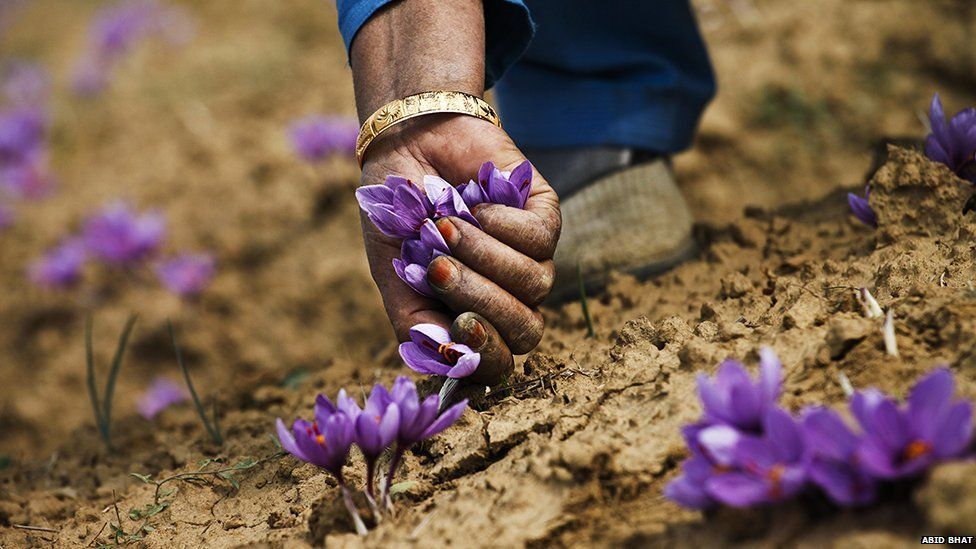
Kashmiri Kesar Saffron: Unraveling the Global Trade Routes and Economic Significance
Abdullaah KhanShare
The significance of this red spice
For centuries, the alluring aroma and vibrant hue of Kashmiri Kesar saffron have captivated the world.
As one of the most valuable spices on the planet, saffron holds a unique place in both culinary and medicinal realms. The mystique surrounding this precious commodity extends beyond its culinary uses; it has been a driving force in shaping global trade routes and significantly contributing to the economy of the Kashmir region.
In this blog post, we embark on a journey to explore the international allure of Kashmiri Kesar saffron, uncovering its influence on international markets and its profound impact on the regional economy:
The Historical Roots of Kashmiri Saffron:
Kashmiri saffron, known as Kesar, has a storied history dating back thousands of years. Its cultivation in the fertile valleys of Kashmir, nestled amidst the majestic Himalayan mountains, earned it the title of "Golden Spice."
Ancient traders and traveler's traversed vast distances to acquire this coveted spice, leading to its introduction into various cultures and cuisines worldwide.
Global Trade Routes and Saffron's Journey:
The allure of Kashmiri saffron traversed ancient trade routes, such as the Silk Road and the Spice Route. These historical pathways connected the Indian subcontinent to distant lands in the Middle East, Europe, and beyond.
As demand for this exquisite spice grew, it became a valuable commodity in trade exchanges, fostering cultural exchange and economic prosperity along the trade routes.
Economic Importance and Cultural Significance:
Kashmiri Kesar saffron became a symbol of luxury and cultural prestige across the globe. Its aromatic and culinary properties made it a prized ingredient in various dishes, confections, and beverages, while its medicinal benefits led to its use in traditional medicine practices.
This high demand for Kashmiri saffron propelled its economic importance, making it a significant contributor to the region's economy.
Saffron Farming in Kashmir:
Kashmir's ideal climatic conditions, with cold winters and moderate summers, provide the perfect environment for saffron cultivation. The labor-intensive process of harvesting saffron involves painstakingly hand-picking the delicate saffron stigmas from the Crocus sativus flowers.
This traditional harvesting method preserves the spice's quality and enhances its value in the international market.
Saffron's Impact on Kashmir's Economy:
The cultivation and trade of Kashmiri saffron have played a vital role in the region's economy for centuries. Saffron farming provides a source of livelihood for thousands of families in Kashmir, contributing significantly to the local economy.
The spice's global popularity ensures a steady demand, enabling farmers to sustain their livelihoods and supporting the socio-economic development of the region.
So what's the gist?
Kashmiri Kesar saffron stands as a testament to the enduring allure of valuable commodities that transcend borders and cultures. Its journey along ancient trade routes and its subsequent influence on international markets have shaped the spice's global significance.
Moreover, the cultivation of saffron has become the lifeblood of the Kashmiri economy, fostering cultural pride and prosperity for generations. As we savor the fragrant delights of this "Golden Spice," let us also celebrate the enduring legacy of Kashmiri saffron in shaping world trade and uplifting the economy of its enchanting homeland.
References:
- Parray, A. R., & Lone, A. A. (2018). Saffron: Production, Standardization and Trade. In Recent Advances in Saffron Biology & Technology (pp. 305-315). Springer, Singapore.
- Nazir, N., Wani, S. M., & Wani, S. H. (2016). Saffron in Kashmir-Prospects and Challenges. International Journal of Science, Environment and Technology, 5(6), 3872-3879.








